Will Philipp Lahm’s ability to play midfield turn out to be better than his play at right-back?Most footballers become professionals knowing exactly what they are good at, and stick with it throughout their careers. Defenders remain defenders and strikers usually remain strikers. After all most footballers don’t really need to change things up - They are good at what they do, and the team needs them to stick to these roles.There are some however, whose careers seem to be meandering along, until through a stroke of luck or an inspirational coaching decision, they find themselves playing way out of their comfort zone and excelling at their new roles in a way they could have never have dreamed of. (Philip Lahm’s transition from right back to central midfielder may well prove to be a stroke of genius by Josep Guardiola – but that remains to be seen.)Here, we take a look at ten rather brilliant players who have become more successful after a change in role – only changes in role made after turning professional have been considered – ruling out the amazing tale of Gianluigi Buffon’s shift from midfield at youth levels and the even more incredible tale of Alan Shearer being turned away by Newcastle United after attending a trial. As a goalkeeper.Wayne Rooney, learn!
#1 John Charles - Leeds United, Juventus, Wales
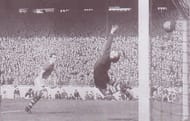
By early 1949, John Charles had established himself as the dominant centre back in a strong Leeds United unit. He was just 17. Late in the October of 1952 though, Leeds had a major problem – as good as their defence was, they simply weren’t scoring any goals. The manager, Major Buckley, evidently had seen something in Charles and decided to start the big man up front as a centre forward. It immediately paid off as Charles scored 11 goals in 6 games.
In 1955-56, his 29 goals would see Leeds promoted to the first division, and if there were fears that Charles was merely a flat-track bully, they were quickly brushed aside with an imperious sweep of that massive right foot. He scored a phenomenal 39 goals in just 41 matches in what would prove to be his last match for the Yorkshire club.
In the summer of 1957, Charles moved to Turin and the club that would make him into a legend – Juventus. In his first season at the Old Lady, he emerged with the Capocannoniere, having found the back of the net 28 times. Juve would win the Scudetto that year, as well as the following two years – Charles’ unique bundle of tremendous power, acceleration and wonderful aerial ability terrorising defenders across the nation.
Precociously talented, the broad shouldered 6’2” Welshman was nicknamed “Il Gigante Buono” – The Gentle Giant – for his philosophy of never intentionally hurting opposing players despite the punishment he often endured (and the obvious fact that most players of his size were traditionally known for their violent use of their physique). The cult status he enjoyed with the Bianconeri faithful was on display for the world to see when he was voted as ‘the best overseas player’ to have ever played for the grand old club during Juve’s centenary celebrations in 1997.
From stopping opposition attacks to finishing off his own team’s forward forays – it was quite a journey for the great Welshman, and it all started off thanks to that Leeds injury crisis of 1952 and the intuitive boldness of Major Buckley.
- Original position – Centre Half
Most successful position – Centre Forward
#2 Franz Beckenbauer - Bayern Munich, West Germany
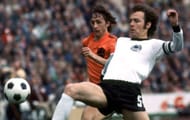
When Bayern Munich won promotion into the newly formed West German first division, the Bundesliga, in 1964, an uber talented left winger cum attacking midfielder caught the eye for his eye for goal and the way he swaggered about the pitch as if he owned it. The young man would be in the West German squad for the 1966 World Cup, where as attacking midfielder he scored four times as the Die Mannschaft powered its way into the final.
The final marked a turning point for young Franz Anton Beckenbauer as he was told to go back back deeper in midfield to try and stop the attacking genius of Bobby Charlton – he wasn’t successful that day, but on his return to the Bundesliga would permenantly adapt to a deeper role in the heart of defence.
In the age of the revolutionary ‘Total Football’ concept, ‘Der Kaiser’ - The Emperor - would go onto pioneer the game-changing notion of an attacking sweeper or a libero centre half, a fluid position behind the traditional defensive line that relied on the player’s ability to see the football field like a chessboard and his propensity to drive gracefully (yet powerfully) forward from deep.
With that naturally regal, un-fluster-able air about him, the supernatural ability to read the game like he had written it and exceptional skill with the ball at his feet saw him bend games to his will and made him one of the greatest players to grace the game. He captained Bayern to the Bundesliga crown four times and helped them end the domination of Ajax in Europe with three European Cups on the trot.
He would also captain West Germany to World Cup success in 1974, his immense leadership and magnificent performances driving the Germans through, his preposteorus brilliance epitomized by one incident in the final against the romantic favourites, the all-powerful Dutch.
Facing off against the magnificent Johan Neeskens and the legendary Johann Cruyff in a deadly two on one situation, he merely trotted along imperiously in front of the two Dutch masters. This threw off Neeskens, who was expecting Beckenbauer to come at him with more aggressive intent – and the move lost its potency as Der Kaiser recovered the ball. This was defending being made to look like child’s play.
From attack-minded midfielder to the greatest libero the world ever witnessed, Franz Beckenbauer ruled every single blade of grass he ever stepped on with the ease of an Emperor commanding his troops.
- Original position – Attacking Midfielder
- Most successful position – Libero Centre Half
#3 Ray Kennedy - Liverpool, England
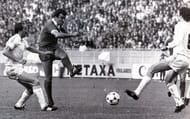
The Ray Kennedy of his Arsenal days was the stuff of Sam Allardyce’s wet dreams – strong, burly and an exceptional header of the ball. Kennedy was the epitome of your run-of-the mill English centre-forward. Then came the move that would change his career forever.
Signed on by all-powerful Liverpool in 1974, he found himself sitting on the bench as the prolific and exceptionally talented Kevin Keegan and John Toshack remained the first choice strike partnership. It was then that the legendary Bob Paisley, evidently having picked up something in the burly striker, gave him the no. 5 shirt and asked him to move into midfield.
If he had done what most players would have and stubbornly refused (Wayne Rooney, listen!), he would have probably sunk without a trace into the long history of mediocre English footballers. As it stands, he didn’t do anything that stupid and placed his faith in the judgment of Paisley.
Now starting off the left flank, Kennedy transformation from that hurly-burly centre forward to cultured midfield maestro was phenomenal and a true testament to Kennedy’s ability and Paisley’s genius. He flourished on the left side of that great Liverpool side and would go on to help the Merseyside club dominate England through the seventies.
He won five League titles and three European Cups at the club, his late runs into the box, cultured playmaking abilities and eye for a killer ball making him an integral part of what was arguably the greatest team to come out of the Old Blighty,
- Original Position – Centre Forward
- Most successful position – Left midfield
#4 Paul Scholes - Manchester United, England

Following the departure of Mark Hughes to Chelsea in 1995, Manchester United were faced with a shortage of quality strikers. Their inspirational manager at the time, a certain Alex Ferguson, then decided to give one of his youth academy graduates an extended run up front. Having come up through the academy and youth team ranks, the diminutive red-head from Salford was now playing out his dreams, partnering Andrew Cole as he stood in for the injured Eric Cantona, and ended up scoring fourteen goals in all competitions that year.
He flitted in and out of the team post Cantona’s comeback, but his big moment came when Roy Keane suffered a knee injury late in 1997. Moving into midfield, he seamlessly slotted into his new role and his incredible passing range (visionary and accurate) and his perfectly timed runs from deep saw him make the role his own. Paul Scholes had finally arrived at the big stage.
And he was here to stay – the Ginger Prince would become an integral part of the United juggernaut that steamrollered through England (winning the league a tremendous 11 times) as well as playing a key role in United’s European successes in ’99 and ’08.
His footballing super computer of a brain, perfect technique, incredible range of passing and thunderous volleys made him one of the best midfielders ever produced by England. (his deployment on the left side for England’s national team should go down as one of the great crimes against football) and it all started with one man’s injury and another man’s faith in his ability.
- Original position – Striker
- Most successful position – Centre Midfield
#5 Thierry Henry - Arsenal, France
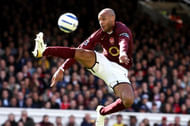
When Monaco signed on Thierry Henry, the then manager of the French club, saw great potential in the young man as a striker, but he decided that Henry’s blistering pace and natural ball control would be more effective on the wings. Henry soon blossomed as a left winger, helping his side to the Ligue 1 title in ’97 and in five seasons had scored 20 times coming off the left wing.
His performances saw him join Italian giants Juventus in ’99, but he found it hard to adjust in the tough defensive world of Serie A and made just a handful of appearances before getting a transfer to Arsenal. Here he was re-united with Wenger and the two took it from where they had left off – with one major difference. With Nicolas Anelka injured, Wenger decided to use Henry as a striker and although he struggled initially, he quickly grew into the role.
Combining his electric pace with a velvet touch, Henry soon developed the ruthless streak that characterizes all the great goal scorers and exploded on to the footballing world’s radar with display after display of deadly attacking talent.
He was a defender’s nightmare, as seen in the evisceration of Inter Milan in 2003 where he ripped the feted Inter defence to shreds in one of the complete attacking displays ever seen on a football pitch. He would do this with his beloved Gunners for years, winning the league two times (and forming a pivotal part of the Invincibles outfit that swept all that stood in front of them in England) and would go on to shine in a star studded Barcelona outfit where he won two La Liga titles and a Champions League crown.
He would also win a World Cup with France in ’98 and finish runners up in ’06, but it was in the white and red of Arsenal that he truly showed why he was one of the greatest strikers the world has ever seen.
- Original position – Left wing
- Most successful position – Centre Forward
#6 Andrea Pirlo - Brescia, AC Milan, Juventus, Italy
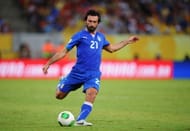
Andrea Pirlo got a first team debut for Brescia at age 16, as a precociously talented trequartista (three quarter specialist), playing in between the forwards and the defence. His undoubted talent caught the eye of Internazionale, and he joined the Milanese club in 1998, but he struggled to break into the first team and was loaned to Reggina and then subsequently back to his hometown club Brescia.
With the legendary fire-cracker of a talent that was Roberto Baggio owning the trequartista role at Brescia by then, Pirlo’s budding career was in serious threat of derailment until the manager Carlo Mazzone started employing him deeper in midfield. Pirlo excelled in this deep lying midfield role and next season, A.C. Milan bought him off the still unsure Inter’s hands.
Under the coaching of Milan legend Carlo Ancelotti, Pirlo developed into one of the best in the world at his role, a true artist, pulling the strings in midfield and allowing his more advanced colleagues Rivaldo, Rui Costa and later Kaka to flourish as the trequartistas.
His visionary passing abilities - ranging from metronomic short passes that kept his side ticking to sweeping long range defence busters - helped Milan to two Serie A titles and two Champions League titles. In that time, he also played a pivotal role in Marcello Lippi’s Italian national side, as the Azzurri proved doubters wrong and became World Champions in 2006.
Unbelievably (and incredibly stupidly as it turned out) Milan let the great man join Juventus on a free transfer, where he became the heart of an unstoppable machine – winning three scudettos on the trot (till date).
The Artist isn’t done just yet, as he strolls around just in front of his defence, creating magnificent works of art in a way that only he can.
- Original Position – Attacking Midfield (Trequartista)
- Best Position – Deep lying midfield playmaker
*Note – the pass in this video is Pirlo’s
#7 Bastian Schweinsteiger - Bayern Munich, Germany
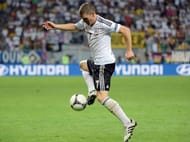
2009 was a tumultuous yearin Bavaria, as Bayern Munich witnessed the introduction of the Iron Tulip, that master tactician and inflexible disciplinarian - Louis van Gaal, as manager. And with him came the supremely talented winger, Arjen Robben. Van Gaal, seeking to accommodate his brilliant compatriot, shifted Bayerns, and indeed Germanysmost talented young winger into a withdrawn, defensively minded role in the centre of midfield.
Until then the young Bavarian had been a livewire, a maverick right footed left winger, whose supreme dribbling skills and powerful shooting made him a nightmare to defend against but, even as shockwaves reverberated across the Bundesliga, Van Gaal had seen in Bastian Schweinsteiger something none of his previous managers had.
Using his magical ability with the ball at his feet and an uncannyability to read the patterns of play, Schweinsteiger was a revelation in his new role and soon become the living, beating heart of the German and Bayern super-machines. His courage, single-minded focus and sheer commitment to the cause allied with his footballing genius soon saw to it that he could create or destroy moves, seeminglyat will.
His high point in Bayern colours came in 2013 when a Schweinsteiger-inspired Munich crushed all in their way to a remarkable treble the Champions league, the Bundesliga and the DFB Pokal. The very next year he would lead Germanys unstoppable march to their fourth world cup crown dominating every single match he played in along the way with the natural ease and regal authority that Der Kommandant has exhibited on the field ever since that tectonic move into the heart of midfield.
- Original position Left Wing
- Most successful position Centre Midfield
#8 Robin van Persie - Arsenal, Manchester United, Holland
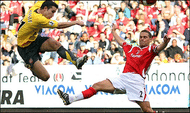
There is something about Arsene Wenger that helps himidentify really talented wingers and convert them in to world class forwards his most famous may have been Thierry Henry, but his decision to convert a young maverick Dutch winger into a centre-forward is up there with the greatest coaching interventions of all time.
Starring on the left wing for Feyenoord, the tempestuous and extremely talented Robin Van Persie caught Wengers eye. Once hebrought himto Arsenal, he moulded RVP into one of the most complete strikers the league has seen. His deceptive pace, aggression, dribbling skills and perfect technique saw his deployment as a second striker become a huge success, putting in assists and goals by the bucketload.
His greatest (and most injury free) season in an Arsenal shirt came in 2011-12, in what would be his last season at the London club, netting 37 times in just 48 appearances in all competitions. The next year, Sir Alex Ferguson, in dire need ofgoals, would lure the striker to Manchester United where his 26 league goals (30 in all competitions) would see Fergies last season end with United being crowned champions of England fora record breaking twentieth time. His next season under David Moyes was blighted by injury, doubt and dips in confidence, yet he still managed to score 18 times in 28 appearances.
His status as one of the games premier finishers was built on that inspired decision of Wengers as much as his own considerable footballing skill.
- Original position Left wing
- Most successful position Centre Forward
#9 Gareth Bale - Tottenham Hotspur, Real Madrid, Wales
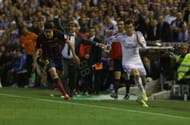
Southampton’s famed youth system has produced many a gem, but none have shined brighter than a young man from Wales named Gareth Bale. He was drafted into The Saints’ first team as a left-back, and his impressive displays soon caught the attention of bigger clubs. He landed up at Tottenham Hotspur, where he starred as a marauding left back, bombing forward at every opportunity, and curling in delightful crosses and smacking in unstoppable volleys with that wicked left of his.
But soon a dip in form, a knee injury and the form of Benoit Assou-Ekotto kept Bale out of the starting eleven. An injury to the Cameroonian saw Bale grab his chance and put in some inspirational displays that cemented his starting berth. When Assou-Ekotto returned Bale was pushed forward to the left wing in what would prove to be one of the greatest moves in modern footballing history.
The tactical and managerial changes at Spurs had now converted Bale into a flying left winger, whose searing pace and athleticism saw him terrorizing full backs. This came to a fever-pitch high on that fateful October day at the San Siro in 2010 when he ripped apart Inter and gave their excellent Brazilian right back Maicon recurring nightmares with a display of the most astonishing pace and power - scoring his first ever hat-trick.
By then, Bale had established himself as a potent attacking force and come 2012-13 he had become the sort of attacking midfielder-striker-winger hybrid that Cristiano Ronaldo had pioneered, scoring an astonishing 26 goals in 44 matches. He had become the most vital attacking player in a talented Spurs outfit and soon caught the eye of Galactico hunting Florentino Perez at Real Madrid.
In 2013, he signed on for a world record 100 million euros at Real Madrid – a formal acknowledgement of the great attacking talent he had grown to become. The goal that beat Barcelona in that season’s Copa Del Rey encapsulated all the best things about Bale – his unearthly speed, incredible strength and athleticism and the ruthless ability to find the perfect finish.
From left back at St.Mary’s to flying winger at the Santiago Bernabeu, it has been one stirring career that shows no signs whatsoever of slowing down.
- Original position – Left back
- Most successful position – Left winger/Right winger-attacking midfielder hybrid
#10 Vincent Kompany - Manchester City, Belgium
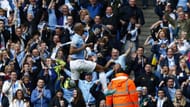
When Vincent Kompany started off at Anderlecht, he showed promising signs of developing into a competent defensive midfielder, his strength, pace and reading of the game aiding him in breaking many an opposition attack. Soon he caught the eye of Hamburg as a replacement for compatriot Daniel Van Buyten but didnt star much in an injury plagued couple of seasons at the German club. He signed on with Manchester City in 2008 as a defensive midfielder as the Mancunian club embarked on an ambitious journey to challenge for the title. A comparative low-profile signing by Mark Hughes, Kompany was viewed as a kind of all-round utility man who could plug gaps in defence when needed to but was primarily a defensive shield ahead of the back four.It was only a couple of years later, in 2010, that he had an extended run at centre back, but soon he was demolishing opposition players with displays of incredible strength, courage, pace and concumate positioning. His exceptional tackling abilities and wonderful ability to read the flow of the game has made him one of the best centre backs in the world right now.
Under his commanding leadership, the Citizens have already won two League titles. With their Belgian rock at the heart of the defense, they show no signs of slipping up at the top of the table. His attitude and iron-willed mental strength turned this Belgian, from an average defensive midfielder into an inspirational and exceptional centre back for both club and country.
- Original position Centre (Defensive) Midfield
- Most successful position Centre Half
